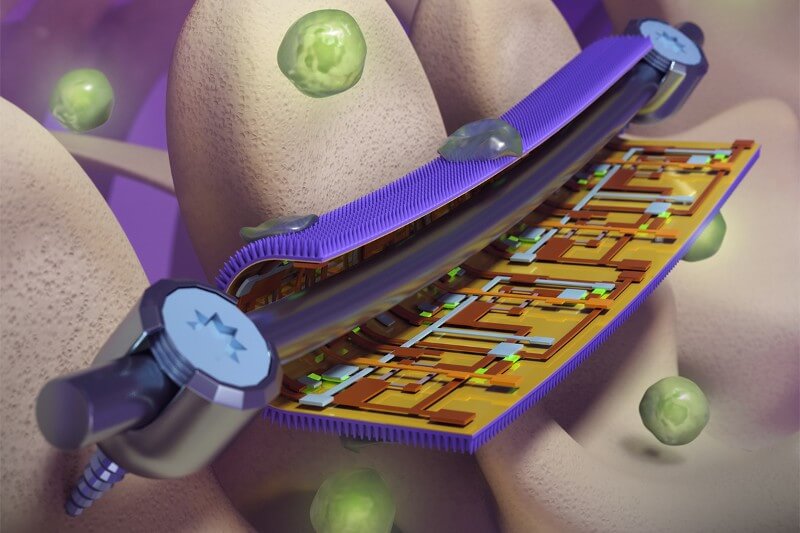Key Points
- Smart coatings for orthopedic implants can monitor strain and kill bacteria.
- Inspired by cicada and dragonfly wings, the coating uses nanostructured antibacterial surfaces.
- Flexible electronic sensors help physicians monitor healing progress and prevent implant failure.
Scientists at the University of Illinois Urbana-Champaign have created “smart” coatings for surgical orthopedic implants. These clever coatings can keep an eye on the strain on the devices and give early warnings of implant failure, while also killing bacteria that cause infections. The researchers took inspiration from the wings of dragonflies and cicadas to design these coatings.
According to a new study in the journal Science Advances, the team found that these coatings stopped infections in live mice. They also tested the coatings on commercial implants in sheep spines to check for any signs of implant failure or problems with healing.
Qing Cao, a professor of materials science and engineering and leader of the study, explained that this clever combination of a bio-inspired design and flexible electronics could help solve a difficult, long-term medical issue. Infections and device failures are common problems with orthopedic implants, affecting up to 10% of patients.
The scientists looked at the wings of cicadas and dragonflies for inspiration. They created a thin foil with tiny pillars similar to those found on the insects’ wings. When a bacterial cell tries to stick to the foil, the pillars puncture the cell wall, killing the bacteria.
Gee Lau, a pathobiology professor and coauthor of the study, said that using this mechanical method to kill bacteria allowed them to avoid the problems associated with chemical approaches. This also made it easier to apply the coating to implant surfaces.
On the back side of the nanostructured foil, the researchers added arrays of highly sensitive, flexible electronic sensors to monitor strain. This could help doctors keep an eye on the healing progress of their patients, guide their recovery, and fix or replace devices before they fail.
The team worked with veterinary clinical medicine professor Annette McCoy to test their inventions. They implanted the foils in live mice and checked for any signs of infection. They also applied the coatings to spinal implants and monitored the strain on sheep spines under normal load.
The prototype electronics currently require wires, but the researchers are planning to develop wireless power and data communications interfaces for their coatings, which is an important step for clinical use. They are also working on producing large amounts of the bacteria-killing foil with nanopillars.
Professor Cao said that these antibacterial coatings have many potential applications, and since their coating uses a mechanical method, it could be useful in places where chemicals or heavy metal ions wouldn’t work well. This research was supported by the National Science Foundation and the U.S. Congressionally Directed Medical Research Programs.


